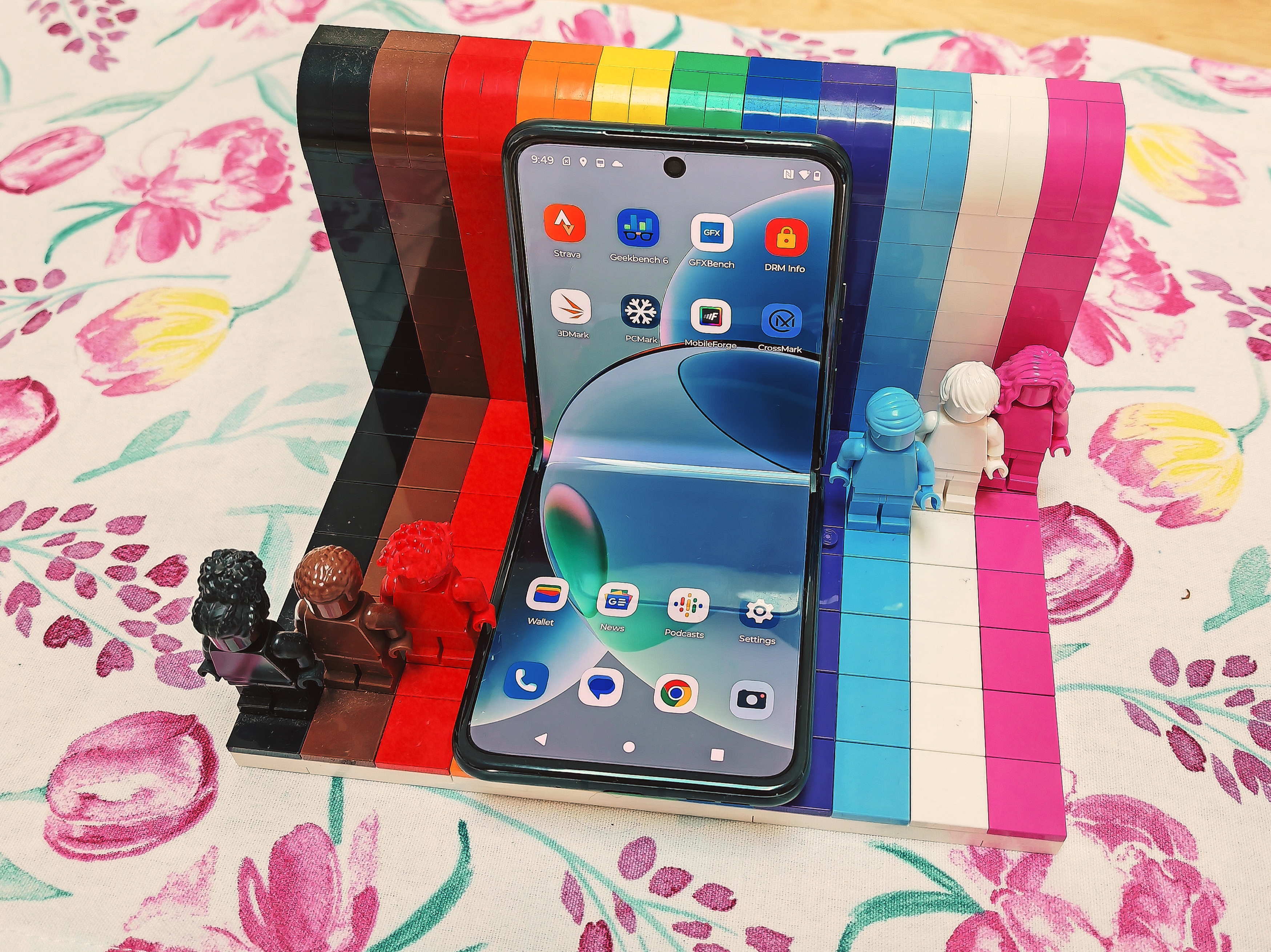
While the same 13-megapixel lens is used as the wide-angle lens on the back, like in the Razr 40 Ultra, the main camera has been replaced in the cheaper model: the most important lens in the Razr 40 is a 64-megapixel sensor from OmniVision, which offers slightly lower light sensitivity, but also features an optical image stabilizer.
Photos look colorful and well-brightened at first glance, but on closer inspection they are not as sharp and slightly less detail-rich than the cameras of high-end smartphones when enlarged. Nevertheless, the main camera of the Razr 40 can take very nice shots. The sharpness is good in low light; only dark areas could be brightened up a bit more.
Videos can be recorded in 4K at a maximum of 30 fps, while 60 fps is also possible in lower resolutions. The quality of hardware for video recordings is not that high for foldables anyway, and 8K is rarely found even in much more expensive devices.
The resulting videos from the main camera of the Razr 40 are very good, but the viewfinder occasionally jerks during fast movements, which is not visible in the final picture. The autofocus could be a little faster, but this is unlikely to be noticeable in the absence of fast-moving scenes.
The wide-angle camera takes usable pictures and even captures some detail.
The screen has a 32-megapixel lens, also from OmniVision, which takes bright selfies with good image quality, but a slight grid becomes visible at high magnification.
Source link
 notebook.co.id informasi dan review notebook laptop tablet dan pc
notebook.co.id informasi dan review notebook laptop tablet dan pc